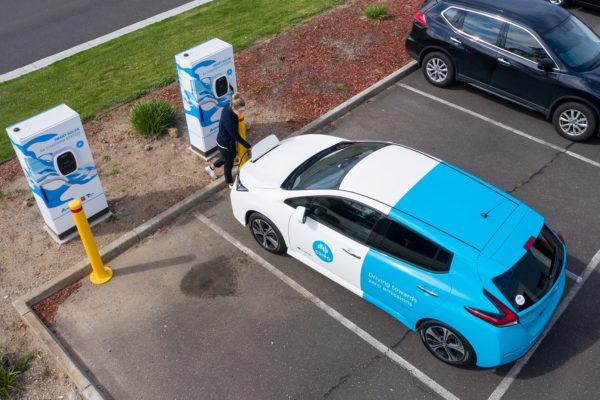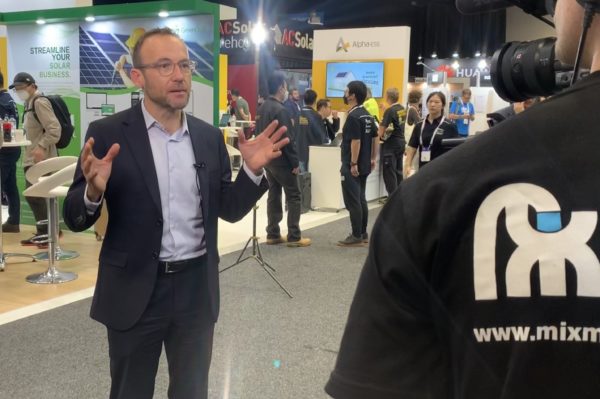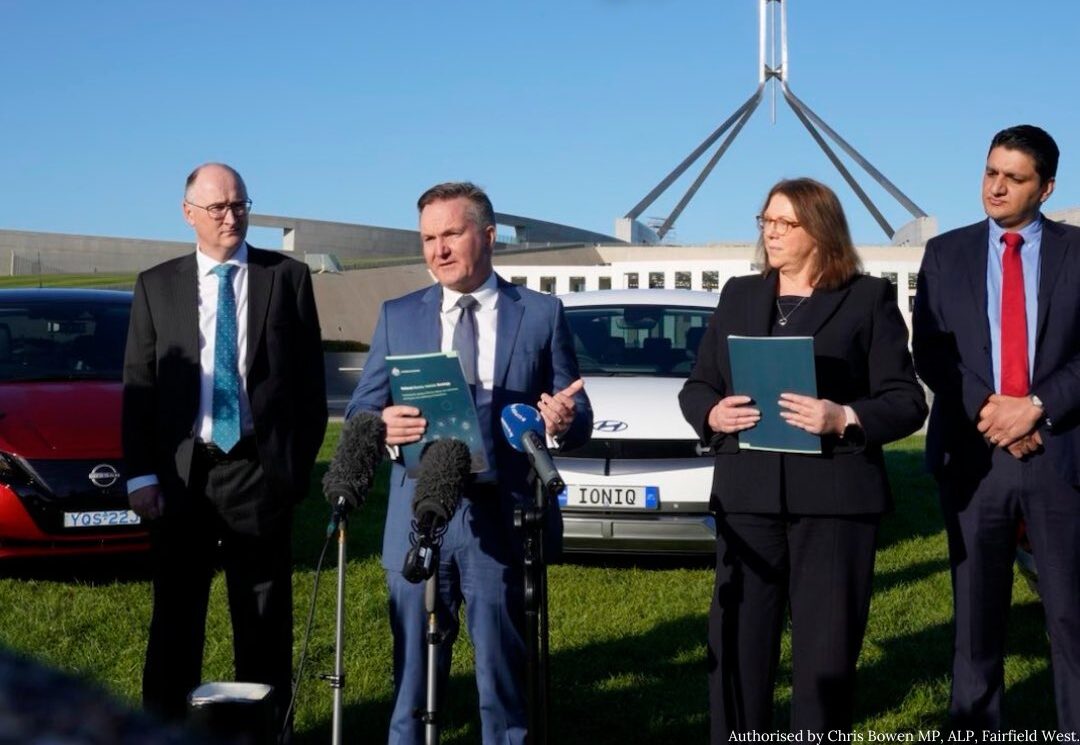Australia’s federal government has released its long-awaited National Electric Vehicle Strategy, Australia’s first such policy. In reality, it is more of a silhouette than a “comprehensive roadmap.”
Strategy overview
The cornerstone of the strategy is a fuel efficiency standard for Australia – or, more accurately, a plan to eventually introduce a standard. A fuel efficiency standard would put a monetary impetus on vehicle manufacturers to import cars which emit less pollution and have improved fuel technologies.
Australia and Russia are the world’s only two developed nations without a fuel efficiency standard today, but despite there being no shortage of global frameworks on which to model the standard, the federal government has given no firm date on when it would be introduced. Rather, it simply flagged its proposal will be made public by the end of 2023.
The fuel efficiency standard is the primary mechanism the government will pull to boost Australia’s EV supply – making it a rather striking omission from the strategy, especially given Minister Bowen opens the document by acknowledging Australia does not have an EV appetite problem, but simply isn’t getting enough EV models to our shores.
Australia & Russia are the only advanced economies without fuel efficiency standards.
Cars sold here emit more pollution that the EU, the USA and NZ, which is bad for climate & our budgets.
We’re changing that, with the launch of Australia’s first National EV Strategy #NEVS pic.twitter.com/BXz3E8AGdK
— Chris Bowen (@Bowenchris) April 19, 2023
The government will also “prepare” for a recycling, reuse and stewardship program for EV and larger vehicle batteries. It has funded the Federal Chamber of Automotive Industries and the Motor Trades Association of Australia to design this scheme, for which few other details were provided.
Next to ‘supply,’ the strategy has another two focus areas, including ‘systems and infrastructure,’ like EV charging stations and safety, and ‘demand,’ which includes monetary incentives to support EV uptake. On this end, the strategy includes no new initiatives beyond Labor’s Electric Car Discount introduced in 2022 which exempts eligible EVs from fringe benefits tax and removes the 5% import tariff on EVs.
In terms of infrastructure, the federal government is set to work with state governments to develop mapping tools for optimum deployment of charging infrastructure. It will also change building codes to help give access to EV charging capacity to people living in apartments. Finally, the government will fund training and support for emergency services.

Image: CSIRO
Overall, the strategy includes very few specifics on any of these points and mostly just flags them as areas of development. The bulk of the document reads like an information sheet about electric vehicles with some additional information on hydrogen fuel cell electric vehicles (FCEVs).
The strategy will be reviewed in 2026 – an aspect of the design the Smart Energy Council lauded, saying it would keep the document “fit for purpose.”
The omissions
Alongside the overall vagueness, the strategy has caught the attention of a number of groups for its omissions. “It contains no new measures to support electric vehicles operating as ‘batteries on wheels’, and nothing for e-bikes or micromobility despite having consulted on it,” Smart Energy Council CEO John Grimes said.

Bella Peacock/pv magazine
This ‘batteries on wheels’ comment refers to the potential for EV batteries to offer two way power flows, known as a vehicle-to-grid or V2G capacity. EV batteries generally have significantly more power and capacity than household batteries, which holds huge promise. While Australia is currently conducting a number of V2G trials, this technology is still some way off widespread adoption and requires concerted support.
The Greens party have also criticised the strategy for not including any target date for the phase out of petrol or diesel cars. While such policies seem rather radical in Australia, they are commonplace overseas, as are restrictions on where diesel cars are allowed to drive.
The Greens also noted there was no overall target for EV uptake, deeming it a “a strategy without destination.”

Image: Bella Peacock/pv magazine
Meanwhile, CEO of EV subscription service Carbar, Des Hang, said even though a fuel efficiency standard is certainly useful, other mechanisms need to be put in place to address Australia’s chronic undersupply of EVs. Hang did not note any specifics, simply saying “there needs to be further financial incentives applied to EV adoption.”
Coming from a different angle, ‘old guard’ alliance Energy Networks Australia noted the strategy should include smart EV charging and pricing reform to stop the incoming electricity load from EVs negatively impacting grid reliability. “This would encourage and reward efficient charging behaviour and provide flexible electricity pricing for customers to make power supply cheaper when it is plentiful – for example during the day to soak up solar generation,” Acting CEO Garth Crawford said.
Australia’s transport problem
In 2022, the transport sector made up 19% of Australia’s emissions, with passenger vehicles specifically accounting for 10%. Without intervention, the government projects transport to be Australia’s largest source of emissions by 2030.

Absent from the strategy, and from the overall discussion in Australia, is any effort to reduce Australia’s reliance on passenger cars or encourage more pooling of transport resources. Instead, the primary vision hinges on moving Australians from internal combustion engines to EVs – which is far from a truly sustainable solution, given the sector’s intensive manufacturing footprint and the virgin-mined materials required to upscale the industry.
The uptake of EVs in Australia grew 86% from 2021 to 2022 alone, but still only accounts for 3.8% of new car sales here – markedly less than in other developed nations.
Preexisting policies
Fitting into the broader strategy umbrella are a number of other EV-related policies federal Labor has introduced in its first year in office. Next to the previously mentioned Electric Car Discount, it has also introduced the Driving The Nation Fund, an EV charging network which will roll out chargers on average every 150 kilometres along major highways.
Fuel efficiency standard
Australia’s lack of fuel efficiency standards as seen it become “a dumping ground for less efficient vehicles,” giving carmakers a market for the models deemed unfit overseas, EV Council CEO Behyad Jefari said during last year’s fuel security summit.
Such a standard would not cost the government nor citizens money to introduce. Moreover, there is already a well established international framework in place that could be enacted immediately – which makes the government’s current delay all the more puzzling.
By introducing vehicle standards, the strategy notes, it would afford Australian’s a greater choice of fuel-efficient and EV models as importers would be penalised for bringing in more polluting models. It would also save Australians roughly $519 per year at the bowser, according to the government’s modelling.
On average, new cars in Australia use 40% more fuel than the European Union, 20% more than the United States, and 15% more than New Zealand.
The standard would only apply to new cars, and not retrospectively.
Consultation on the design of the national fuel efficiency standards begins today, April 19.
This content is protected by copyright and may not be reused. If you want to cooperate with us and would like to reuse some of our content, please contact: editors@pv-magazine.com.









By submitting this form you agree to pv magazine using your data for the purposes of publishing your comment.
Your personal data will only be disclosed or otherwise transmitted to third parties for the purposes of spam filtering or if this is necessary for technical maintenance of the website. Any other transfer to third parties will not take place unless this is justified on the basis of applicable data protection regulations or if pv magazine is legally obliged to do so.
You may revoke this consent at any time with effect for the future, in which case your personal data will be deleted immediately. Otherwise, your data will be deleted if pv magazine has processed your request or the purpose of data storage is fulfilled.
Further information on data privacy can be found in our Data Protection Policy.